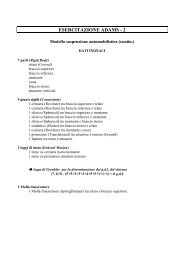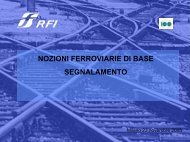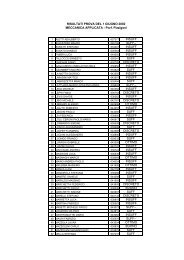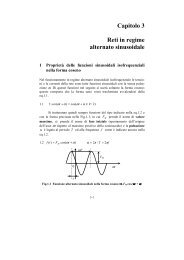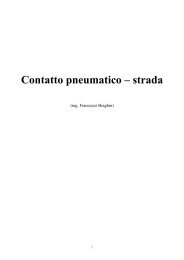Semmering Railway - Wikipedia, the free encyclopedia
Semmering Railway - Wikipedia, the free encyclopedia
Semmering Railway - Wikipedia, the free encyclopedia
Create successful ePaper yourself
Turn your PDF publications into a flip-book with our unique Google optimized e-Paper software.
New York and Harlem Railroad - <strong>Wikipedia</strong>, <strong>the</strong> <strong>free</strong> <strong>encyclopedia</strong><br />
Horses were used at first, but this was changed to steam north of 23rd Street. It was soon bought by<br />
Cornelius Vanderbilt.<br />
The New York City Common Council passed an ordinance on December 27, 1854, to take effect in 18<br />
months, barring <strong>the</strong> NY&H from using steam power south of 42nd Street, due to complains by abutters.<br />
Before that, <strong>the</strong> steam locomotives had run to 32nd Street. When <strong>the</strong> ordinance took effect, <strong>the</strong> NY&H<br />
had not done anything. After much debate, including an injunction issued preventing <strong>the</strong> city from<br />
enforcing <strong>the</strong> ordinance, <strong>the</strong> courts struck down <strong>the</strong> injunction on July 30, 1858.<br />
Between 1847 and 1856, a track was built in Grand Street between Centre Street and The Bowery (along<br />
with one block on The Bowery) for northbound trains. Southbound trains continued to use <strong>the</strong> old route.<br />
Grand Central Depot opened just north of 42nd Street in October 1871, and intercity passenger trains<br />
from <strong>the</strong> north were ended <strong>the</strong>re. (Ironically, by this point, <strong>the</strong> first of <strong>the</strong> Manhattan els had opened on<br />
Ninth Avenue.) Freight trains continued to operate along <strong>the</strong> tracks south of Grand Central, as did<br />
streetcars (still turning off at 42nd). On April 1, 1873, <strong>the</strong> NY&H leased its freight lines to <strong>the</strong> New<br />
York Central and Hudson River Railroad, but <strong>the</strong> horse car line south of Grand Central remained<br />
separate. This eventually became <strong>the</strong> New York Central Railroad and <strong>the</strong>n part of Penn Central and<br />
Conrail. Metro-North Railroad took over <strong>the</strong> line in 1983.<br />
The streetcar line<br />
In 1864 or 1865, a branch was added for trains between downtown and <strong>the</strong> 34th Street Ferry, running<br />
along 32nd Street, Lexington Avenue and 34th Street. This was <strong>the</strong> start of separate horse car service,<br />
running between Astor House and <strong>the</strong> ferry.<br />
On July 2, 1870, horse cars started to run not only to <strong>the</strong> 34th Street Ferry but to 73rd Street via Madison<br />
Avenue. These trains ran through <strong>the</strong> Murray Hill Tunnel and turned west on 42nd before going north on<br />
Madison (northbound cars used Vanderbilt Avenue to 44th Street). The line was soon extended to 86th<br />
Street and <strong>the</strong>n to Harlem.<br />
The first electric streetcar open to passengers in New York City, a Julien electric traction car, was run on<br />
http://en.wikipedia.org/w/index.php?title=New_York_and_Harlem_Railroad&printable=yes (3 of 6)22/04/2007 15.48.13





